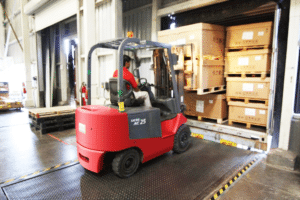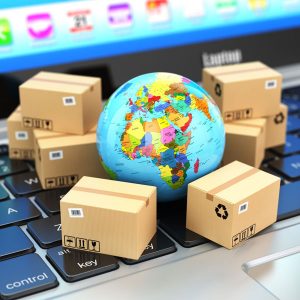Dangerous Goods Shipping & Customs Clearance in the UAE: Are You Aware of These?
Transportation of hazardous materials presents challenges related to potential human error, proper packaging, labeling, and more. These challenges make adhering to stringent regulations on regional and international levels crucial for safety and security. Good communication and special training for personnel involved in transportation can also help mitigate the risks.
Ryan Worldwide has comprehensive expertise in customs clearance, storage, and transportation of a wide variety of goods, including dangerous goods. This blog discusses every detail on the regulations for dangerous goods shipping & customs clearance in the UAE.
Understanding Dangerous Goods Classifications
The United Nations (UN) has classified items or materials with hazardous properties as dangerous goods. If handled carelessly, these pose risks to transportation facilities, infrastructure, safety, or human health.
The UN Model Regulations outline the nature of the dangers inherent in these materials. Based on this, there are 9 dangerous goods classifications:
- Explosives
- Gases
- Flammable Liquids
- Flammable Solids
- Oxidizing Substances
- Toxic and Infectious Substances
- Radioactive Materials
- Corrosives
- Miscellaneous Dangerous Goods
This accurate classification of dangerous goods cargo is necessary to help handlers follow regulations to prevent delays, penalties, and potential legal issues. Ryan Worldwide can assist you in preparing documentation for each of these classes and adhering to industry standards.
Key Regulations for Shipping Dangerous Goods in the UAE
Some regulatory bodies ensuring the compliant and safe transportation of hazardous materials are:
- UAE Customs
- ADNOC (Abu Dhabi National Oil Company)
- MoEI (Ministry of Environment and Islamic Affairs)
They conduct audits and inspections of vehicles and facilities involved in the transportation of hazardous materials. They enforce compliance and penalties and promote training and best practices in dangerous goods shipment.
Further, the International Maritime Organization (IMO) has created the International Maritime Dangerous Goods Code (IMDG Code) to govern the safe shipping of dangerous goods by sea. The UAE also has specific procedures and regulations to ensure that hazardous material handling complies with international standards.
Transportation of Dangerous Goods: Best Practices
Three of the most significant factors ensuring safe handling of dangerous goods cargo are
- careful segregation
- meticulous packaging
- accurate labeling
These best practices help shippers ensure the safe transportation of hazardous materials. These also reduce the risk of accidents.
Further, driver training and specific vehicles are inevitable for transporting dangerous goods. These steps improve safety by complying with regulations.
Ryan Worldwide follows these key practices to ensure safety during the transportation of dangerous goods:
- Complying with international regulations
- Using approved packaging and containers
- Ensuring proper labeling and documentation
- Enforcing regulatory checks
- Highlighting certification and training for personnel involved
Dangerous Goods Shipping & Customs Clearance in the UAE
In the UAE, customs clearance for dangerous goods involves
-
Document Preparation:
-
Commercial Invoice
-
Packing List
-
Bill of Lading/Airway Bill
-
Certificate of Origin
-
Dangerous Goods Declaration (DG)
-
Import/Export Licenses (if required)
-
Other relevant permits
-
-
Submitting prepared documents through the Dubai Trade Portal
-
Inspections:
-
Document review by customs officers
-
physical inspection to verify the packaging and goods
-
-
Duties and Taxes:
-
Calculation of duties based on the classification, value, and other factors of goods
-
Tax and duty payment through the Dubai Trade Portal
-
-
Goods Release:
-
Final Approval
-
Clearance
-
Dangerous goods shipping & customs clearance in the UAE is time-sensitive. Delayed shipments of these goods can lead to fines.
Ryan Worldwide’s customs clearance team ensures compliance of dangerous goods shipments with international standards and UAE regulations. They offer specialized expertise in:
-
document preparation
-
import/export license procurement
-
Cooperation with relevant government agencies
Also read: VAT Customs Duty in UAE: What You Need to Know in 2025
Dangerous Goods Storage Solutions in the UAE
Regulated dangerous goods storage in warehouses must follow these requirements:
- Designated Storage Areas
- Secure Storage
- Temperature control
- Fire safety
- Inventory tracking features
- Segregation and Separation
- Proper Labeling and Marking
- Employee Training
- Emergency Preparedness
- Maintenance and Condition
- Proper Handling
- Ventilation
- Containment and Spill Management:
- Regular Inspections
Complying with these regulations prevents accidents and ensures the well-being of individuals. They also protect the environment. Certified third-party storage providers like Ryan Worldwide offer compliant storage facilities. They can also offer you 24/7 monitoring of the warehouse.
Handling Dangerous Goods with Expertise and Care
You can cut risks and ensure safety while handling dangerous goods using proper equipment and trained personnel. Trained personnel have enhanced skills and knowledge for handling dangerous goods correctly.
Proper equipment offers containment and protection during the transportation of hazardous materials. You also need emergency response plans for dealing with spills during the transportation of hazardous materials.
Ryan Worldwide adheres to rigorous training standards and Standard Operating Procedures (SOPs) for handling hazardous goods.
Why Choose Ryan Worldwide for Dangerous Goods Logistics in the UAE
Ryan Worldwide is a shipping and logistics provider based in Dubai. Our dangerous goods shipment services include:
- compliance
- expertise
- A global network
We also offer transparent communication and personalized support throughout the shipment of dangerous goods cargo.
Also read: Importing Pharmaceuticals and Medical Devices to the UAE: A Comprehensive Guide
Conclusion
Dangerous goods shipping & customs clearance in the UAE are complex because of many factors. These include
- packaging
- classification
- delays
- accidents
- potential hazards
- Fines
Ryan Worldwide can help you adhere to strict regulations on these factors to protect the environment, people, and economy.
Contact us now for expert guidance on dangerous goods shipping & customs clearance in the UAE:
- Phone: +9714 2528468 (or) +971559020985
- Email ID: info@ryan-worldwide.com

Also read: Sea Freight Solutions: An Ultimate Guide on Sea Freight Shipping Services



Recent Comments